All grain brewing with just one pot? The BIAB method
With all grain brewing, you start with crushed malt and mash it with hot water (liquor) to extract the sugars inside. You then boil this malt sugar-water mix (wort) with your hops before cooling it down and moving it to a fermenter.
Commercial breweries use a number of different vessels for this process. You’ve got the mash tun, where the grain is added to water from the hot liquor tank, then a copper or kettle where the wort is boiled. The scale of large commercial brewing, with literal tons of malt and equally huge volumes of water, makes separate vessels a necessity.
But what if you’re only brewing a keg’s worth of beer at a time, with just a small bag of grain? Do you really need a mountain of machinery?

What if we told you that you could brew all grain beer with just a single pot…
Bring on the bag
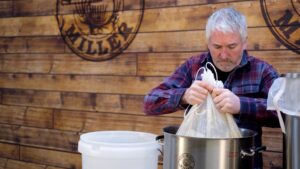

The Brew In A Bag method – BIAB – uses just one vessel for the entire “hot side” of the brew, both mash and boil. Keeping things simple, BIAB also skips the sparge step, where sugars are rinsed off the grain following the mash. Instead, the full volume of liquor required for the brew is added at the start.
Once you’ve got your liquor in the pot, you heat up to mash temperature and add your grain. This is where the “bag” in BIAB comes in. A nylon mesh bag keeps the grain together and makes it easier to remove at the end of the mash: you simply lift the bag out of the pot and allow the wort to drain off. From there, the process is identical to other all grain methods: bring the wort to the boil, add hops as needed, and chill to a yeast-friendly temperature when you’re done.
Our grain bags are completely reusable – simply wash in warm water and drip dry!
How much water?
BIAB works best with smaller batches because of the space needed to fit in all the liquor at the start. Some of that liquor will be lost as evaporation during the boil, and the grain will also hold onto a good amount that you won’t get back, even after draining the bag – malt is surprisingly absorbent!
To work out how much water you need to start with, you can use a couple of simple assumptions:
- Boil off losses are usually around 3L per hour of boiling. You can make a more specific measurement for your pot by doing a test with plain water.
- As a rule of thumb, you can assume you’ll lose 1L of liquor per kilogram of grain.
You’ll want a bigger pot than this to account for the space the grain takes up and to give you room to stir the mash without overflowing. As a rule of thumb, you need a pot a little under twice your batch size.

For 20L batches, we suggest our 35L kettle. You can also get this with a powerful 3kW electric element included.
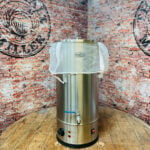
You could also use a modified tea urn type vessel, such as the Grainfather sparge heater. Check out our version specially modified for BIAB!
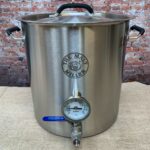
For 10-12L batches, our 25L kettle has loads of extra room, allowing you to think about bigger beers that require much more grain (which means more liquor).
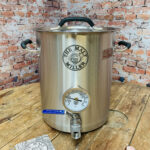
BIAB is also ideal for super small batches. Our 12L brew kettle will fit on a normal kitchen hob and is perfectly sized to make batches for a 5L fermenter or demijohn. Even if you normally brew bigger batches, you could use BIAB to test a new hop, malt, or yeast you’re interested in.
Crush it real good
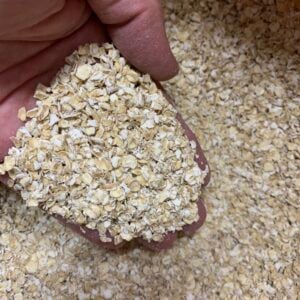
One major advantage of BIAB is that all the extra liquid means you never need to worry about a “stuck mash”. This is when a thicker mash turns into a porridge-y lump that sparge water can’t flow through, and can be a real nightmare to fix!
In fact, because the risk of sticking is so low, you can use more finely crushed malt and higher proportions of sticky grains like wheat and oats with no worries. We recommend selecting our fine crush option when buying malts for a BIAB brew.
Top tips
One of our resident homebrewers has been using BIAB for many years. Here are their top five tips:
- During the mash, you want to mix the grain through the liquor as evenly as possible. A stir every 15 minutes or so can really help.
- A mash out step of 75°C at the end of the mash is a good idea to help the sugars drain off the grain when you pull out the bag.
- A pair of heatproof brewing gauntlets are worth their weight in wort! Handling a very hot and wet grain bag is no fun at all with bare hands.
- Be aware how heavy the bag can be when you pull it out – around twice as heavy as the grain you put in, due to all the liquor that’s absorbed. Lift carefully, and be careful of splashing hot wort!
- If you can bear the weight (or have a friendly assistant) you can gently squeeze the bag to release more liquor (you must wear heatproof gloves for this one!). Try squeezing the bag, dunking it back in, then repeating a couple of times to wash as many sugars off your grain as possible – being extra careful of splashing hot wort.
Check out our video on BIAB, and remember to subscribe to our YouTube channel for all the latest brews and reviews from The Malt Miller.

